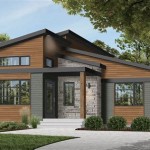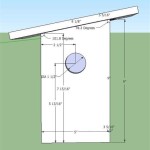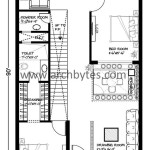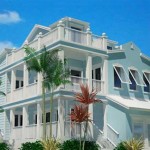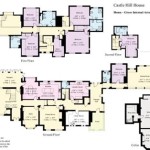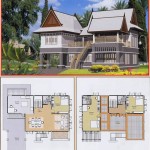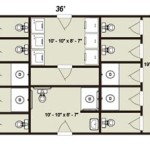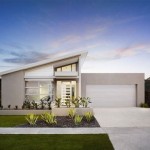Log Home Plans With Indoor Pool: A Fusion of Rustic Charm and Modern Luxury
The allure of a log home lies in its inherent connection to nature, its rustic aesthetics, and the warm, inviting atmosphere it creates. Traditionally associated with cozy fireplaces and outdoor pursuits, the concept of incorporating an indoor pool into a log home design might seem unexpected. However, the integration of an indoor pool within a log home plan represents a sophisticated blend of rustic charm and modern luxury, offering a unique and desirable living experience.
Carefully considered log home plans with indoor pools provide a sanctuary for year-round relaxation, fitness, and entertainment, regardless of external weather conditions. This combination enhances the property's value and elevates the homeowner's lifestyle, offering both practicality and aesthetic appeal. The integration of an indoor pool into a log home necessitates careful planning and design considerations to ensure structural integrity, energy efficiency, and a cohesive aesthetic.
Key Considerations in Designing Log Home Plans with Indoor Pools
Integrating an indoor pool into a log home plan requires meticulous attention to several key aspects. These considerations range from structural engineering to environmental control and aesthetic integration. Neglecting these factors can lead to significant problems down the line, impacting the functionality and longevity of both the pool and the home.
Structural Integrity: The weight of water in a pool is substantial, demanding a reinforced foundation and supporting structure. A standard residential swimming pool can hold tens of thousands of gallons of water, translating to significant weight per square foot. The foundation must be engineered to withstand this static load, preventing settling or cracking. Furthermore, the structural integrity of the log walls in proximity to the pool area must be carefully assessed. Moisture penetration from the pool can compromise the wood, leading to rot, mold growth, and structural weakening. Proper waterproofing and ventilation are crucial to mitigating these risks. Consulting with a structural engineer experienced in working with log homes and pool construction is paramount to ensure the design meets all safety and building code requirements.
Environmental Control: Managing humidity and temperature is critical in an indoor pool environment. Evaporation from the pool surface constantly introduces moisture into the air, potentially leading to condensation, mold growth, and damage to the log walls and other building materials. A dedicated dehumidification system is essential to maintain a comfortable and healthy indoor environment. This system should be sized appropriately to handle the specific volume of the pool and the surrounding space. Furthermore, proper ventilation is necessary to circulate air and remove excess moisture. Integrating energy-efficient windows and insulation can minimize heat loss and reduce energy consumption associated with heating and dehumidifying the pool area. The HVAC system should be specifically designed for the unique demands of an indoor pool environment, ensuring optimal performance and longevity.
Aesthetic Integration: Integrating the pool area seamlessly into the overall aesthetic of the log home is crucial for creating a cohesive and visually appealing design. The choice of materials, colors, and lighting should complement the rustic charm of the log home. Natural stone, wood accents, and earth-toned finishes can create a harmonious transition between the log structure and the pool area. Large windows and skylights can maximize natural light, enhancing the sense of openness and connection to the outdoors. Thoughtful landscaping around the pool area can further enhance the aesthetic appeal and create a serene and inviting atmosphere. The integration of the pool should feel like a natural extension of the log home, enhancing its beauty and functionality.
Design Options for Indoor Pools in Log Homes
Various design options exist for incorporating an indoor pool into a log home, each offering unique advantages and aesthetic considerations. The choice depends on the homeowner's preferences, budget, and the overall design of the log home.
Attached Pool Room: This involves constructing a separate room or addition directly connected to the main log home. This approach offers the advantage of easier construction and isolation from the main living areas, minimizing noise and humidity transfer. The attached pool room can be designed with large windows or sliding glass doors to offer views of the surrounding landscape. The exterior of the pool room can be constructed using log siding or other materials that complement the log home's aesthetic. This allows for a seamless integration of the new structure with the existing log home. The attached pool room also allows for dedicated heating and ventilation systems, optimizing energy efficiency and environmental control.
Integrated Pool Space: This involves incorporating the pool directly into the main living area of the log home, creating a more open and integrated space. This approach requires careful planning and design to ensure proper ventilation and humidity control. The pool area can be separated from the main living area by a partial wall or glass enclosure, allowing for visual connection while minimizing noise and moisture transfer. The design should incorporate materials and finishes that are moisture-resistant and easy to maintain. The integrated pool space can create a dramatic and visually striking focal point within the log home, enhancing its overall appeal and creating a unique living experience.
Basement Pool: Utilizing the basement space for an indoor pool is a cost-effective option, particularly in areas with significant temperature variations. This approach requires careful waterproofing and ventilation to prevent moisture damage to the structural elements of the home. Adequate lighting is essential to compensate for the lack of natural light in the basement. The basement pool area can be designed as a dedicated entertainment space, complete with a bar, lounge area, and other amenities. This option offers a private and secluded swimming experience, ideal for relaxation and fitness.
Long-Term Considerations for Log Home Pools
Owning a log home with an indoor pool entails ongoing maintenance and operational considerations to ensure its longevity and optimal performance. Addressing these aspects proactively can prevent costly repairs and maintain the overall value of the property.
Regular Maintenance: Consistent pool maintenance is crucial to ensure water quality, prevent equipment malfunction, and extend the lifespan of the pool and its components. This includes regular cleaning, chemical balancing, and equipment inspections. The pool filter should be cleaned or replaced regularly to maintain optimal water clarity. The pool pump and heater should be inspected and serviced annually to ensure efficient operation. Regular maintenance also includes inspecting and cleaning the pool's surface to prevent algae growth and staining. Professional pool maintenance services can provide comprehensive care and ensure the pool is operating at peak performance.
Energy Efficiency: Optimizing energy efficiency is essential for reducing operating costs and minimizing environmental impact. Consider using a pool cover to minimize evaporation and heat loss. Invest in a variable-speed pool pump, which can significantly reduce energy consumption. Utilize solar heating to supplement the pool's heating system, reducing reliance on fossil fuels. Install energy-efficient lighting, such as LED lights, in the pool area. Regularly inspect and maintain the pool's insulation to prevent heat loss. By implementing these measures, homeowners can significantly reduce the energy consumption associated with operating an indoor pool.
Moisture Control: Vigilant moisture control is essential for protecting the log structure and preventing mold growth. Regularly inspect the log walls and surrounding areas for signs of moisture damage. Ensure the dehumidification system is operating effectively and is properly maintained. Promptly address any leaks or water intrusion issues. Consider using moisture-resistant finishes and sealants on the log walls and other surfaces in the pool area. Proper ventilation is crucial for removing excess moisture and preventing condensation. By implementing these measures, homeowners can protect their log home from the damaging effects of moisture and maintain a healthy indoor environment.

Find Domain Here Luxury Swimming Pools Pool House Indoor Design

Indoor Swimming Pools House Plans And More

Indoor Swimming Pools House Plans And More

Building Your Dream From Nature With Lake Country

Traditional Home Plans With Beautiful Indoor Swimming Pool And Round Shape Bathtub House Design Houses

Most Beautiful Indoor Swimming Pools For Your Home Homes

Custom Log Home Floor Plans Katahdin Homes

These Vacation Al Cabins Have Private Indoor Pools

Design Tips For Indoor Swimming Pools House Plans And More

Grants Pass Oregon Log Home Custom Built Homes Pioneer Of Bc

